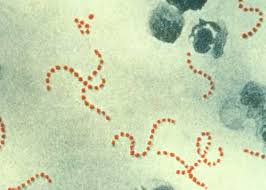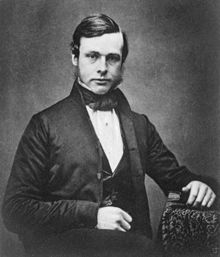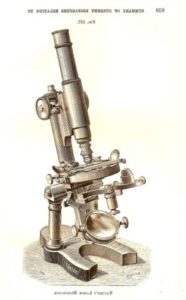Holding ~ unused Mayday material (from Ch-2B) Honoring Semmelweis, Holmes, Gordon, White, Pasterur & Kock
A Short History of Microscopes, ‘Wee Beasties’ and Hope: the 200 years that changed so much for the human species
This critical period of time met the criteria of Albert von Szent-Gyorgyiis, who observed a truism of human advancement, concisely expressed in less than 10 words:
“A discovery is an accident meeting a prepared mind –
The miracle of ‘modern’ medicine was preceded by an impressive list of successive inventors and inventions that forms a curiously interrelated story that is far more recent than we might expect.
The story of accidental discoveries meeting prepared minds starts with the English biologist Robert Hooke in the 1660s. He was the first person to build and used a simple microscope to observe the structure of plants and insects. This allowed him to see previously invisible details on materials such as fabric, cheese and the common flea.
His rudimentary equipment was only able to magnify objects 10 to 20 times, but that was enough to see the tiny walled chambers that made up a piece of cork. He called them “cells”, since they reminded him of monks’ cells in a monastery. We have used his descriptive term ever since.
In 1665 Robert Hooke published his finding in an illustrated book called ‘Micrographia’. Shortly thereafter, his book fell into the hands of an unschooled 17th century Dutch drapery merchant, Antony van Leeuwenhoek, who was already making magnifying glasses as a hobby. Van Leeuwenhoek was so fascinated by the detailed drawings that he made himself a microscope so as to see these things for himself. This was one of humanity’s luckiest days.

Van Leeuwenhoek was born in Delft on October 24, 1632. His father was a basket-maker, his mother’s family were brewers of beer. Before becoming a drapery fabric merchant. At one time he served as the trustee for the estate of the famous painter Jan Vermeer, the deceased and bankrupt artist who had had been born in the same year as Leeuwenhoek. Van Leeuwenhoek is thought to have been a friend Vermeer’s before he took on the role of trustee.

The microscopic world that van Leeuwenhoek saw under his microscope, and named its inhabitants “Wee Beasties”
In 1673, at the age of 41, van Leeuwenhoek used his simple one-lens microscope to peer into a drop of rainwater and became the very first person to ever see the world of microorganisms. His skill at grinding lenses produced the best microscopes of his time, with magnifications ranging up to 200th power.
This allowed him to observe tiny “animalcules” under his microscope, which appeared as wiggling threads, long strings of undulating rods and beads and twilling spirals. These living bacteria and protozoa were referred to by van Leeuwenhoek to as “wee beasties”.
Van Leeuwenhoek took meticulous notes and later described his findings in letters to some of the most renowned scientists of the day. What started out as a curiosity and part-time hobby turned him into one of the first persons to use what is now called the “scientific method” — a clear ability to construct experimental procedures that are both rational and repeatable.
His talent at analyzing problems produced the philosophy of biological investigation and he developed many of the ground rules still used for scientific experimentation. Letter of June 12, 1716 Antony van Leeuwenhoek:
“ . . . my work, which I’ve done for a long time, was not pursued in order to gain the praise I now enjoy, but chiefly from a craving after knowledge, which I notice resides in me more than in most other men.
And therewithal, whenever I found out anything remarkable, I have thought it my duty to put down my discovery on paper, so that all ingenious people might be informed thereof.”
Before the microscope came into common use, the world of microorganisms was unknown and unthinkable. There were many fanciful explanations for disease, including divine retribution for sins, malevolent spirits, evil spells cast by a sorcerer, unfavorable astrological influence and swampy air. Physicians thought that infectious disease could be spontaneously generated from non-living things, a 2000 year-old wrong assumption known as the theory of spontaneous generation, which held sway until the French chemist Louis Pasteur was able to provide a scientific replacement — the germ theory of disease — in 1864.
The world of “wee beasties” was mostly a curiosity during the two centuries between the invention of the microscopic and the discovery of bacteria as the origin of infectious disease. There were a few physicians who theorized that somehow microorganisms might be responsible for contagious disease, but the medical world dismissed this as an unproven theory that was of no value to them.
Luckily for the human species, van Leeuwenhoek was not the last “prepared mind”, as there were several other very bright and industrious individuals who were convinced that whatever was causing contagious diseases and infection was so small it couldn’t seen (i.e. micro-organisms).
These souls were French chemist Louis Pasteur (of ‘pasteurization’ fame), Sir Joseph Lister, a 19th century physician and surgeon to Queen Victoria and Dr. Robert Koch, a German country doctor of unimaginable brilliance.

Sir Joseph Lister, Surgeon to Queen Victoria, inventor of the principles of antisepsis, sterile surgical technique and and Father of Modern Surgery
French Chemist Louis Pasteur ~ Born in France December 27, 1822 ~ September 28, 1895
The first ‘prepared mind’ in our story is Louis Pasteur, a famous French chemist originally in the French wine industry. For him, “happy accident” of discovery occurred in 1864 when he identified that the process of fermentation (resulting in beer and wine) and putrefaction (such as the rotting of meat) were the result of microorganisms — invisible bacteria.
Discovery of the fermentation process put an end to the idea of spontaneous generation as an explanation of diseases. Pasteur, who was himself the son of a vintner, was able to prove that heating wine to a temperature slightly below the boiling point prevented bacterial spoilage.
He developed a way to kill harmful bacteria by slowly raising the temperature of liquids to about 180 degrees and maintaining that temperature for a predetermined length of time. This process is referred to as ‘pasteurization’. Pasteur was an inspired scientist whose experimental methods provided the ability to make milk and other organic liquids safe to drink through pasteurization.
The principles of pasteurization is one of the most
important public health measures ever discovered
The theory and techniques of pasteurization could be immediately used by anyone; its goal of rendering liquids safe for human consumption could be accomplished with simple, affordable equipment already at hand. Whenever used, it was instantly able to prevent diseases such as TB from being passed from the cow to humans, diarrheal diseases caused by E. coli in commercially bottled fruit and vegetable juices, botulism in raw honey and many other uses.
Pasteur’s experiments demonstrated a causal relationship between bacteria and disease but in 1864 (when he first published his scientific paper) he was unable to prove that a specific strain of bacteria was responsible for a specific disease.
Pasteur’s work provided the missing critical elements to contemporary physician-scientists
However, Pasteur’s momentary failure was the stuff of greatness for two contemporary physician-scientists – Joseph Lister and Robert Koch. Each of these men carefully studied Pasteur’s work and each took a separate element of Pasteur’s theory to make the focus of their own scientific investigation. Each greatly advanced the goals of modern medical science as we know them today.
One of those was Sir Joseph Lister, a 19th century British surgeon referred to above, who applied Pasteur’s germ theory at a practical level to surgery in 1865, just a year after Pasteur published his original paper on the germ theory of disease. Lister was certain that something invisible to the naked eye was responsible for post-operative infection and in 1865 he discovered that spraying a dilute solution of carbolic acid around the operating room dramatically reduced the post-operative infection associated with surgery.
The other “prepared mind” and scientist is Dr. Robert Koch, a German country doctor who came on the scene in 1871. He did what Pasteur had not yet been able to achieved — the ability to prove that a specific strain of bacteria was responsible for each specific disease. Dr Koch became the first person to establish that microorganisms taken from a diseased animal would cause the same disease in an uninfected one. This enabled the medical profession to understand the basic bacteriology behind the germ theory, bringing medical science ever closer to being able to both prevent and eventually treat infectious disease.
Dr. Joseph Lister, Father of Modern Surgery ~ 1865
Like many other discoveries and inventions, the story bacteriology is also not uniformly linear.

Sir Joseph Lister, Surgeon to Queen Victoria, inventor of the principles of antisepsis, sterile surgical technique and and Father of Modern Surgery
In 1864 — 15 years before Pasteur’s Germ Theory was published — Sir Joseph Lister, Royal Surgeon to Queen Victoria and pioneer of antiseptic surgery, read all the studies by Louis Pasteur on bacterial pathogenesis and was extremely impressed. Unfortunately, the majority of the medical profession continued to disagreed and discount both Pasteur and Lister ideas about microscopic bacteria and other kinds of invisible “germs”.
Then a serendipitous series of events occurred that kicked the slow progress of medical science into high gear, where it has remained ever since.
Lister is often identified as the father of modern surgery but what he did that was so unique was develop the antiseptic and aseptic techniques and the process of sterility that we still use today to make surgical procedures safe from infections.
Unlike Pasteur, who was a chemist and not a doctor, Lister had the ability to put Pasteur’s theories to the test in a clinical setting. Even though Pasteur had no background or personal knowledge of microbes, and was flying mostly by the seat of his pants, he decided to do just that.
 Dr. Lister accepted Pasteur’s theory that some type of biological entity — perhaps a bug too small to be seen with the naked eye — was responsible for the virulent post-operative infections that at times killed as many as 90% of Lister’s post-op patients.
Dr. Lister accepted Pasteur’s theory that some type of biological entity — perhaps a bug too small to be seen with the naked eye — was responsible for the virulent post-operative infections that at times killed as many as 90% of Lister’s post-op patients.
As Queen Victoria’s personal physician, he naturally did not want to take any chances with her health, and so Lister decided to implement Pasteur’s theories by using another new idea — that of sterilization — with the goal of killing off 100% of these unseen pathogens. After each use of his surgical instruments, Lister submerged them for several minutes in boiling water. Without touching the newly sterilized instruments, he wrapped them in clean cloth squares that he had sterilized earlier by using a hot iron to flatten each fabric piece.
Having established that heat — submersion in boiling water or steam — would reliably kill off pathogenic bacteria, Dr. Lister used a pressure cooker to created the first “sterilizer”.
Then he used scalding hot steam to sterilized all his surgical instruments, cloth drapes, bandages and other medical equipment or other supplies that might come in contact with his patients during surgery. Deaths in his practice from infection dropped like a stone to less than 5%.
This truly seemed like a medical miracle!
We have Lister to thank for discovering the principles of Medical Asepsis and Sterile Surgical Technique
Lister went on to develop the general principles of asepsis and sterile surgical technique still used today.
This included scrupulous hand-washing between patients, with close attention to cleaning under one’s fingernail beds, and the daily scrubbing of hospital floors, walls, and other equipment with a germicidal solution.
Equally important among Dr. Lister’s contributions to medical science was his principle of ‘surgical sterility‘ or ‘sterile technique‘ that continues to be used by surgeons and obstetricians, as well as other medical and healthcare professionals all over the world.
For this reason, Dr. Lister is still referred to as the Father of Modern Surgery and his name is rightly associated with the ‘germ-killing’ mouthwash Listerine and other such products.
Last but not least of our three “prepared minds” is Dr. Robert Koch, Germany ~ December 11, 1843 to May 27, 1910

Winner of the 1905 Nobel Peace Prize in the physiology of Medicine
Pasteur and Koch both did their most important work within a few years of each other — 1867 for Pasteur and 1871 for Koch.
Dr. Robert Koch was a remarkably intelligent and talented country doctor living in a very rural part of Germany. But in spite of his isolated from the wider scientific world, Dr. Koch knew about and was intensely interested in Louis Pasteur’s germ theory of disease.
He was also aware that Pasteur had not been able to prove that contagious illnesses and infection were caused by the microscopic bacteria itself, and not other cells or unseen toxic substances that happen to co-exist with the bacteria.
Koch realized this inability to definitely match a particular bacteria to a specific disease was major if not fatal stumbling block. While working alone in the rural countryside and maintaining a busy medical practice, Koch committed to scientifically proving Pasteur’s germ theory by identifying the specific bacterial origin of specific infectious diseases.
His scientific laboratory was the four-room flat that was his home; all his experimental equipment and medical supplies, except for the microscope given to him by his wife, were made from ordinary farm materials.
Using scientific methods, Dr. Koch was able to identify the anthrax bacteria and prove that anthrax in sheep and cows was caused by a specific and identifiable strain of bacteria. He went on to develop the standards still used to establish absolute proof of a causal relationship between a specific strain of pathogen and the disease ascribed to it.
Dr. Koch was also able to overcome another of the major stumbling blocks in the emerging field of microbiology, which was the inability to grow a pure strain of bacteria under controlled laboratory conditions.
An Accidental Discovery Meeting a Prepared Mind
Dr. Koch’s story directly relates to Albert von Szent-Gyorgyiis’ describtion of discovery as “an accident meeting a prepared mind”. An extremely important discovery by Dr Koch was just such an accident. While in his lab one afternoon, he noticed that a sliced potato left behind on a table (leftover part of someone’s lunch) had grown a colony of a single strain of bacteria on its surface. He immediately recognized this as the missing step in the isolation of the uncontaminated strains of bacteria necessary to track a specific disease.
Another serendipitous meeting between accidental discovery and the prepared mind occurred when a technician in Dr. Koch’s lab — a man whose last name was Petri — was given the job of developing a reliable method to grow pure colonies of bacteria. He came up with the agar-agar concoction that used the Japanese agar-agar seaweed, gelatin and meat broth in a flat dish. This is still known as the Petri dish and still used in modern labs to grow out cultures.
The ability to isolate and grow pure strains of microorganism allowed Dr. Koch to establish that each and every infectious disease was indeed caused a very specific type of bacteria. Dr. Koch’s work became widely known and embraced by other scientists who also knew and respected the work of Pasteur and Lister. Eventually Dr. Koch became a famous bacteriologist and had his very own well-equipped laboratory and using the scientific process, when on to discover the pathogens that caused tuberculosis and cholera.
As with Pasteur and Lister, the human family is indebted to Dr. Koch for his meticulously constructed and performed experiments that were so vital to the development of medicine as solid science.
Unfortunately Dr. Koch’s vital contribution is rarely mentioned during contemporary discussions of the germ theory of infectious disease in spite of having won The Nobel Prize in Physiology or Medicine 1905.
Nonetheless, he earned his well-deserved title as Father of Bacteriology.
